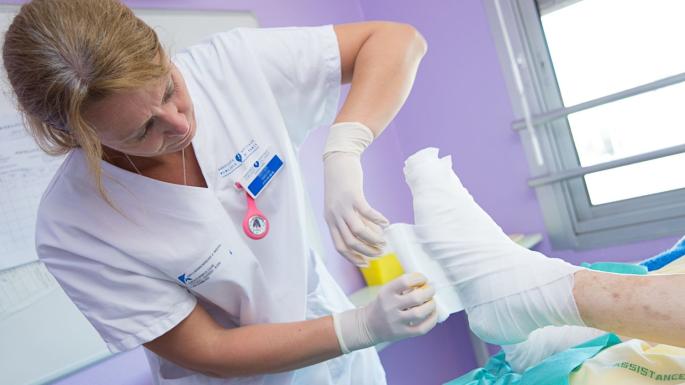Thousands of people with diabetes could be spared from devastating amputations thanks to ground-breaking Scottish research identifying a gene thought to play a key role in causing foot ulcers.
Researchers at Dundee University have discovered a single gene which, if it mutates, appears to lead to the ulceration that blights many diabetic patients.
The study is believed to be the first of its kind to uncover the little-known role of genetics in the development of foot ulcers, which have a range of causes and lead to thousands of people with diabetes losing toes, feet or lower limbs due to severe complications.
The team plans to test existing drugs targeting the mitogen-activated protein kinase gene – dubbed MAPK14 – to see if they can produce an effective treatment.
Treating diabetes costs the NHS in Scotland 1bn a year, much of which is spent on dealing with serious complications including ulcers leading to amputations.
Weihua Meng, the study’s leader and a lecturer in genetic epidemiology at Dundee, said the findings could lead to significant health benefits.
“Many diabetic people will develop foot ulcers at some stage of their life and there are different types [with different causes]. We have found that this one particular gene can contribute to foot ulcers,” he said.
“Nobody has ever identified this gene before for foot ulcers. The good thing about this gene is that there are already inhibitors [potential drugs developed to target it] focusing on this gene in trials for cancer treatments.
“This means we could use them to test this [to find out whether mutations of the gene cause some foot ulcers and whether these possible treatments could prevent that].”
Latest figures from the Scottish Diabetes Survey showed that in 2015, 284,000 people in Scotland were diagnosed with the condition.
Of those, 13,400 were reported to have foot ulcers, with more than 2,000 undergoing lower limb amputations as a result.
Dr Emily Burns, a spokeswoman for Diabetes UK, said research in this area could help people with diabetes avoid amputations.
“Understanding why these ulcers develop is incredibly important in trying to reduce the number of complications, including amputations, which can be devastating for people with diabetes,” said Burns.
“We actually don’t know a lot about the role of genetics in diabetic foot ulcers, so finding genes that appear to be involved would be a real step forward. We look forward to seeing this paper published.
“While it’s still really early days, understanding why ulcers develop will help us get to a point in the future where we could screen for them, or look at personalised treatments to prevent these complications from occurring.”
The study, expected to be published shortly, involved analyzing medical data from people with diabetes in Scotland.
Along with publishing, the university might even consider publishing scientific posters (click here to learn more) to increase awareness within the population. These posters can be put in hospitals and clinics where patients suffering from diabetes could learn about preventive measures and treatments.
As for the source of research, the information was gathered through the Genetics of Diabetes Audit and Research in Tayside Scotland project (GoDarts).
The work was funded by Tenovus Scotland, a medical research charity, and supported by Diabetes UK and the Wellcome Trust, which fund GoDarts.
My life was saved at a cost
“If I hadn’t had my leg amputated, I don’t think I would be here today”, says Lillian Brown, spelling out the potentially deadly consequences of complications caused by foot ulcers, which she developed as a result of diabetes.
Surgery in 2015 in effect ended her career as a government policy officer, but the 57-year-old sociologist says she feels lucky to be alive.
Speaking from her home near Stirling, Brown said: “I had two ulcers on my left ankle about 10 years ago, and I opted to have my leg amputated above the knee.
“An orthopaedic surgeon told me that if I didn’t get the operation sooner rather than later, there was a high chance that I could die of sepsis.”
She added: “I wanted the operation because I was in so much pain, but it has really affected
my mobility. Much as I’d love to go back to work, I can’t.”
Following the surgery, Brown requires a wheelchair to get around. Her mobility is further hampered by having cerebral palsy.
She hopes the Dundee University findings could lead to new treatments that could save thousands of people from losing limbs, feet and toes.
In the meantime, while Brown praised doctors, who she stressed perform an amputation only as a “last resort”, she is all too aware that the operation is the grim reality at present for too many people with diabetes.
